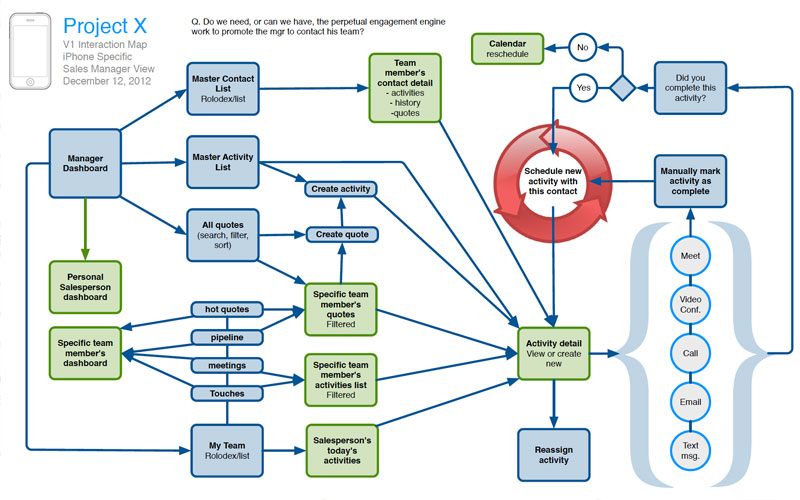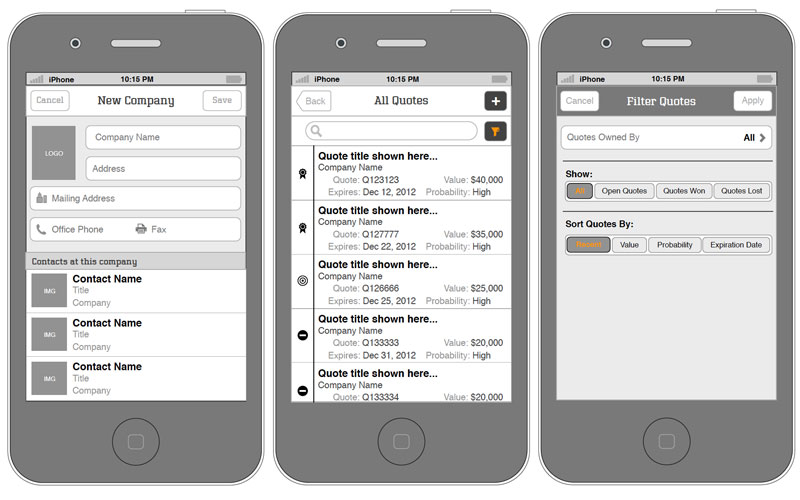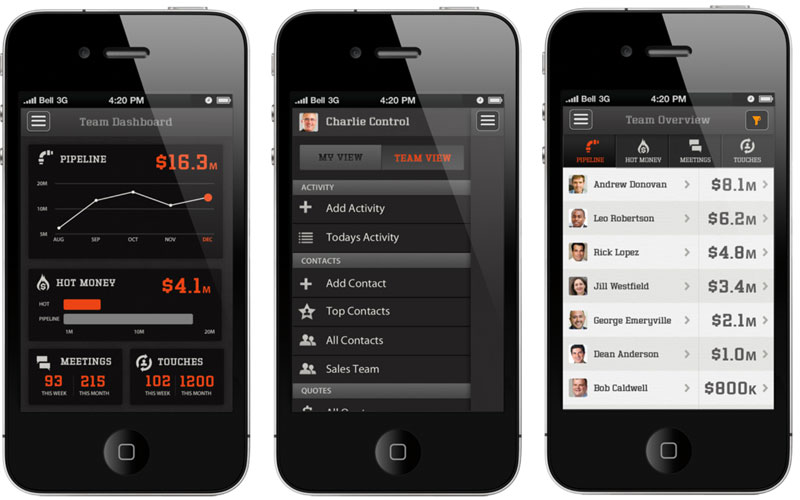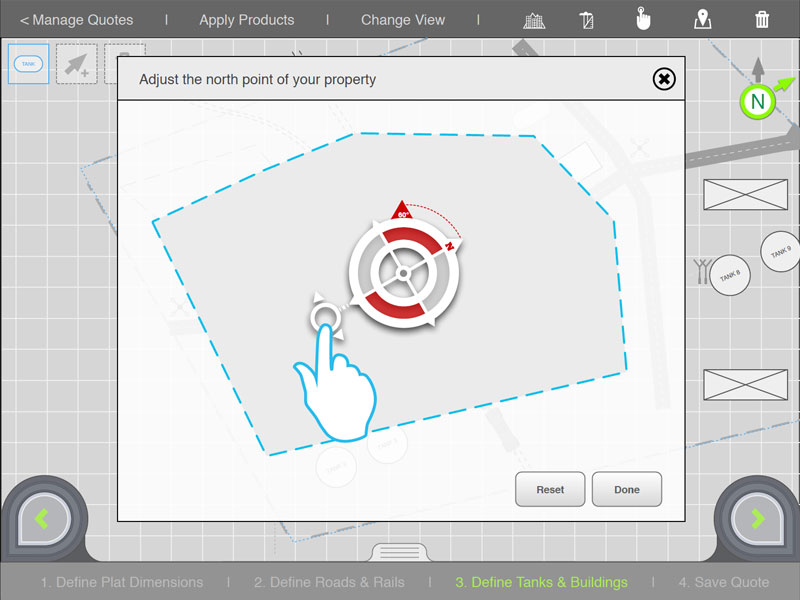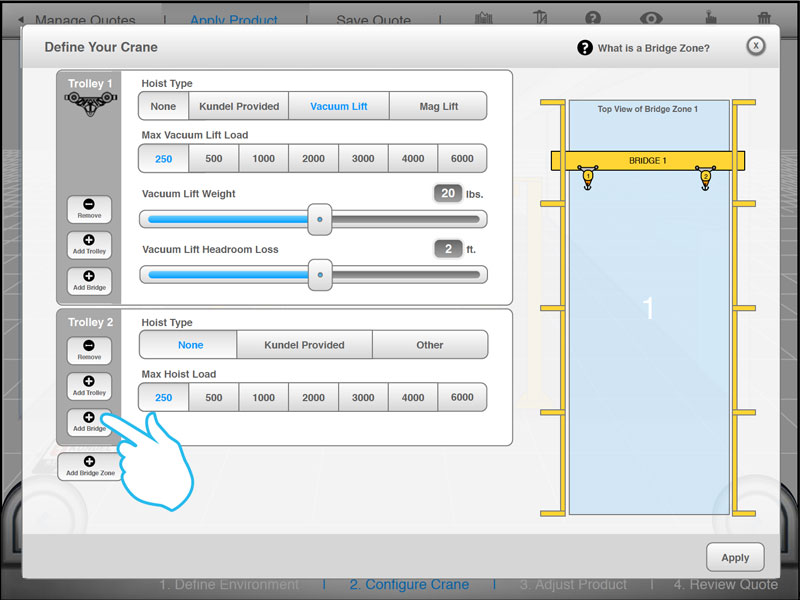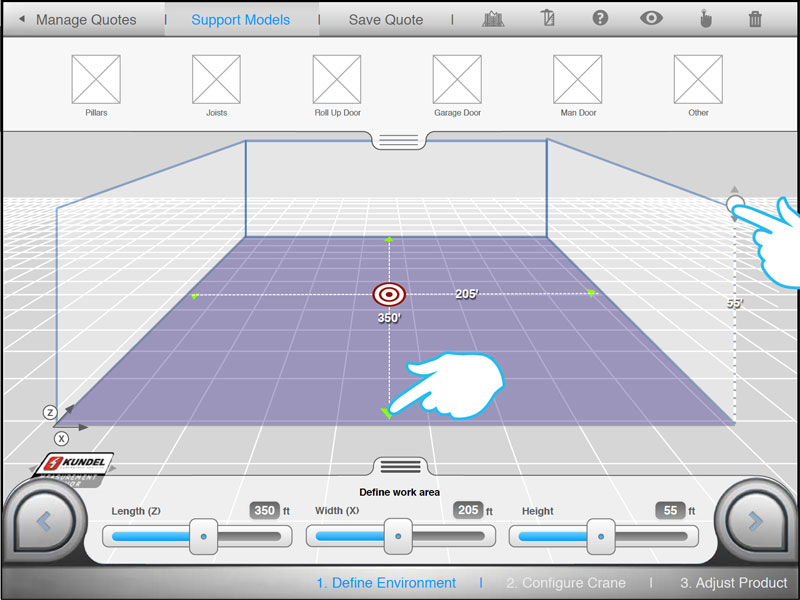The Next-Gen of Configure, Price, Quote

Atlatl is a start-up that combines 3D modeling, the Unity gaming platform, and a user-friendly approach to create a new way to configure and sell modular products for the industrial goods market. I joined Atlatl as their Director of User Experience in 2012 - when they had a single proof of concept, and a lot of interesting ideas. They were an extremely ambitious company. Their objective was to create a suite of cloud-based sales tools that contained a tablet-based configuration tool, a mobile phone-based CRM (Customer Relationship Management) tool, and a desktop app as the central portal for the sales teams files and data.
Building a Scalable Platform
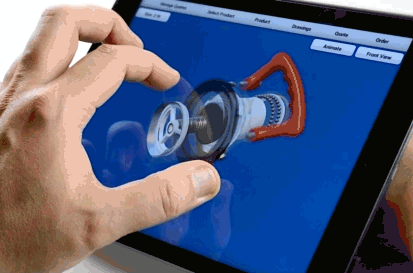
To curb this conflict, the executive team pressed the design and development teams hard to make the code and design as reusable as possible. The expectation was to reuse 80-90% of the codebase for each new client. This was a noble goal to be sure, but was continually undermined by a tendency to sell the product to a variety of companies that required completely one-off design strategies for the software to solve their unique scenario. In nearly two years, we created unique 3D configuration solutions for over 15 different companies - most requiring a different solution than the others.
Documenting a Scalable Pattern Library
 I addressed this issue in two ways. The first was focusing on designing and documenting a scalable platform using a flexible pattern library instead of creating one-off disposable solutions each time. Our pattern library offered navigational and functional modules that served both simple and complex product scenarios. This included documenting single and multi-step process flows, basic and complex affordance controls, and every other aspect required to generate a new product solution. Furthermore, in addition to documenting the typical 2D affordances, we also had to invent and document the controls used within the 3D workspace to manipulate the environment and 3D models.
I addressed this issue in two ways. The first was focusing on designing and documenting a scalable platform using a flexible pattern library instead of creating one-off disposable solutions each time. Our pattern library offered navigational and functional modules that served both simple and complex product scenarios. This included documenting single and multi-step process flows, basic and complex affordance controls, and every other aspect required to generate a new product solution. Furthermore, in addition to documenting the typical 2D affordances, we also had to invent and document the controls used within the 3D workspace to manipulate the environment and 3D models.
Promoting a Sensible Sales Strategy
The second method I employed to address this resource problem was aimed at the sales team. I put together an assessment of product investment. It illustrated the relational impact of product complexity to cost in time and resources. It may seem obvious that products with a lot of complex parts and options not only took more time to model, but the interface and experience took much longer to produce as well, but it needed to be pointed out. In addition to this, I also illustrated the types of products that they could go after that we could produce without the massive investment found in the companies and products they were currently selling to. These included:
Product Exploder
Customizable industrial products are a good target to sell to. This type of modular product solution was light on interaction variables. Thus making it quicker to code. The design varied only slightly from product to product.

Service Exploder
Often manufacturers of industrial parts and equipment need a better solution for explaining the details of maintaining and repairing their products. The software solution for this product is light on task flow and easier to produce.

Minor Modifier
Products that are modified mostly by scaling the product up or down to a custom size or material are better candidates to target. The models are generally simpler, and the user flow and interactions required are predictably basic.
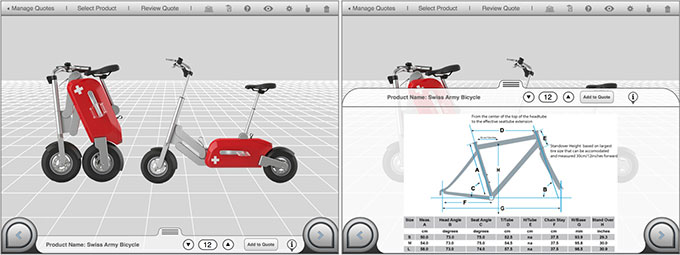
2D Ecommerce Engine
The platform can also easily support a 2D solution for scenarios such as ecommerce. This would require no modeling time, and the interaction model could be easily replicated for different products and clients.
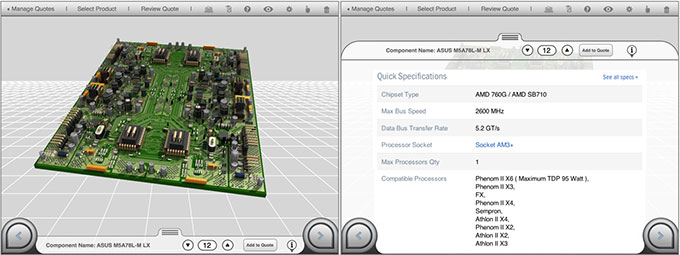
3D Product Inspector
Targeting clients who require a simple 3D model of their products that can be zoomed in and flipped would also be helpful. This would require far less design work to create, and could be reused for other products and clients.

EZ Configure Price Quote
The early adopting clients have extremely complex modular products. Aiming at clients who offer simpler customizations would simplify both the modeling and design effort required. The plaform could be easily reused.
3D Configurator Examples
Exploratory Design Examples
